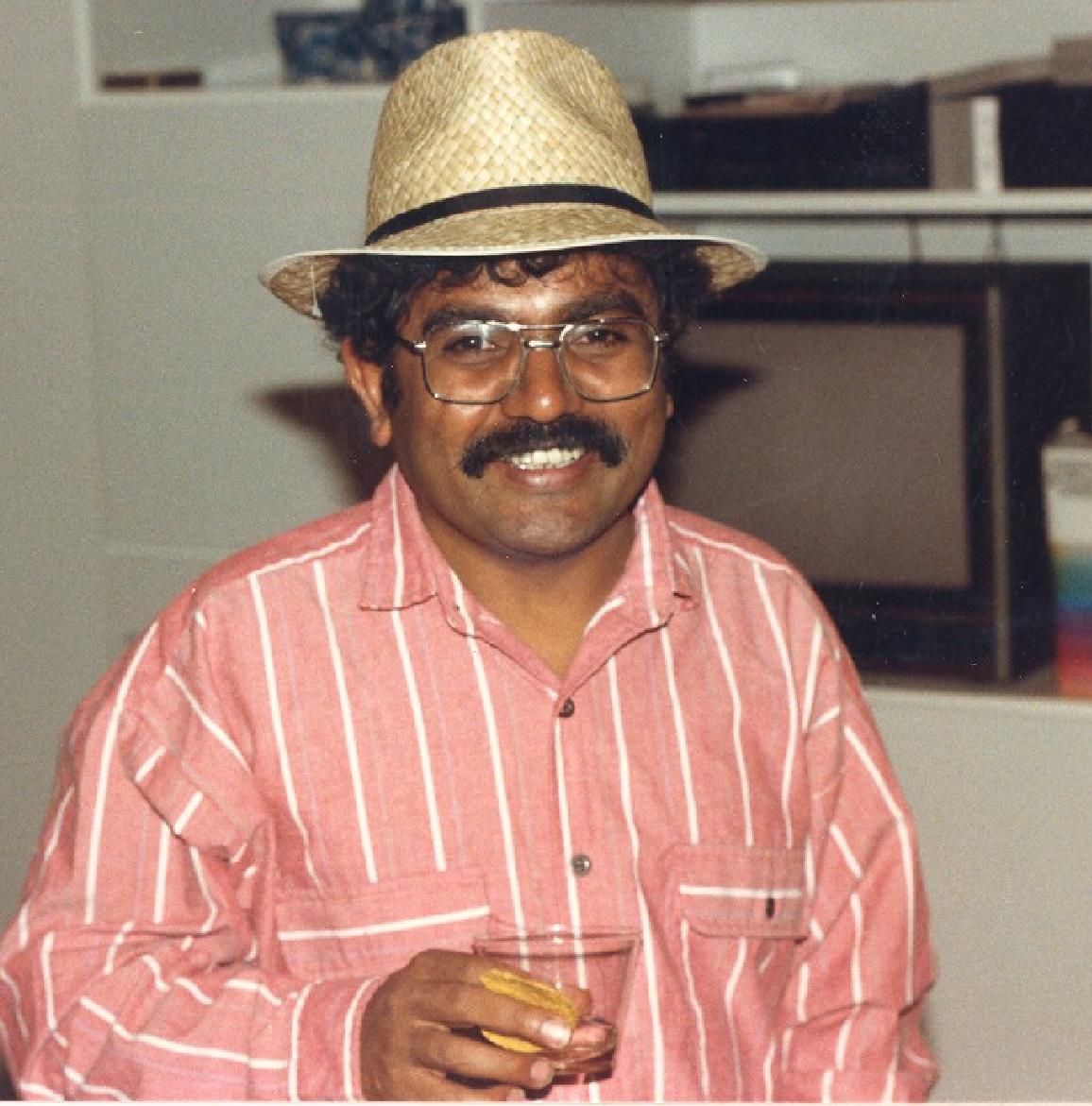
 GCNEWS
GCNEWS
A Newsletter for Galactic Center Research
This Volume was edited by Angela Cotera, Heino Falcke & Sera Markoff
email: gcnews@aoc.nrao.edu

 GCNEWS
GCNEWS


W. Miller Goss (NRAO, Socorro) & Cornelia C. Lang
(University of Massachusetts, Amherst)

Our colleague Anantharamaiah (Anantha) died on October 29, 2001 in Bangalore India. He had been diagnosed with lung cancer in mid 2001. Anantha is survived by his wife Dr. Jyotsna Anantharamaiah and his son, Avinash.
Anantha joined the Raman Research Institute (RRI) in Bangalore in 1974 after a B.Sc. and M.Sc. in Physics from the University of Mysore. His Ph.D thesis from RRI and Bangalore University was obtained in 1985 based on Ooty Radio Telescope observations. In 2000, Anantha became the chair of the Astronomy and Astrophysics Division of RRI. He had become a professor at RRI in 1997.
Anantha was well known at the VLA/VLBA having spent five of the last 15 years there. Anantha was a Jansky Fellow from 1986-1989, active in VLA radio recombination line research (with Farhad Yusef-Zadeh, Alan Pedlar, Peter Dewdney and Miller Goss) and solar scattering of radio sources (with Tim Cornwell and Ramesh Narayan). Tim Cornwell has pointed out the breadth of Anantha's interests, understanding, and enthusiasm from their work on various forms of scattering. It will come as no surprise to those who knew Anantha that this work started with conversations between Anantha and Tim when returning from a ski trip to Santa Fe. The work itself centered around an experiment with the VLA to confirm coherences in the speckles of scattering of sources near the Sun but it led to continuing work with others on astrophysical applications of scattering.
The new field of high resolution observations of the weak radio recombination lines from extragalactic spiral galaxies was begun in this period with collaborators: Alan Pedlar, Jun-Hui Zhao, Francois Viallefond, Bikram Phookun and Goss. Anantha was the driving force for this innovative, difficult and exciting research. An additional groundbreaking research area in the 1980s was the confirmation of carbon recombination lines at low frequencies in the direction of Cas A by Anantha, Radhakrishnan, Bill Erickson and Harry Payne using the 140 foot telescope at Green Bank. This work importance of line broadening at low frequencies due to pressure or radiation broadening. In addition, Anantha et al. demonstrated the smooth transition of these carbon recombination lines from emission at higher frequencies due to stimulated emission to absorption at lower frequencies, in agreement with the behavior expected from dielectronic-like recombination in the CII gas. In the years 1997-1999, Anantha spent two productive years working in Socorro. One of Anantha's most enjoyable projects in this period was a VLA and IRAM study of the remarkable radio and mm recombination lines from the starburst galaxy Arp 220.
Over the years, Anantha was interested in GC research and was an active contributor. Anantha collaborated in a large VLA study of the GC at 20 and 90 cm with Jacqueline van Gorkom, Ulrich Schwarz, Pedlar, Ron Ekers, and Goss. The nature of Sgr A West, East, and the spectral properties of the nonthermal filaments (NTFs) was a theme of this research. Farhad Yusef-Zadeh remembers the detailed recombination line observations of the GC which he and Anantha carried out using the 140 foot telescope at Green Bank in 1987. These were difficult observations, but Anantha's understanding of single dish, recombination line observations led them to success. Subsequently, Yusef-Zadeh and Anantha presented their results at the IAU symposium in Los Angeles in 1988. Farhad points out that their conference proceeding perhaps has the longest two names on any astronomical publication (32), including 9 A's!
Anantha's presence in Socorro from 1997-1999 revived a lot of the ongoing GC research there. Anantha revisited some of his VLA 20 and 90 cm radio recombination line observations (with Pedlar and Goss) of the ionized gas in the SgrA Complex (from 1987 and 1996) and presented a comprehensive paper at the Tucson GC workshop in the fall of 1998. In addition, he began a lasting collaboration with Cornelia Lang (then a NRAO predoc from UCLA) exploring the GC magnetic filaments. The discovery of the "Pelican" filament (the only one parallel to the Galactic plane) was made during this time in collaboration with Namir Kassim and Joe Lazio. The early VLA 74 MHz observations of the GC (under the leadership of Kassim) were painstakingly reduced by Anantha, and are now being continued in the PhD thesis (University of New Mexico) of Michael Nord.
At the Tucson GC workshop Anantha played a major role in many of the discussions and sparked many suggestions for ways to extend Galactic Center work into his familiar low frequency domain. He encouraged people to use the GMRT in India, and subsequently, a number of GC astronomers from that workshop ended up visiting Anantha in Bangalore and Pune during the IAU Symposium on Low Frequency Radio Astronomy in late 1999. Anantha was also the prime instigator and a loyal member of the "Galactic Center Club" which became a Socorro institution in 1998-1999, meeting Fridays after work at the Capitol Bar.The Tucson meeting "Central Parsecs" caps were mandatory uniform!
While Anantha was recognized as the world expert in radio recombination lines, his research interests were diverse and he made significant contributions in many areas, including interstellar and interplanetary scattering, the cosmic deuterium abundance, and the understanding of noise in radio interferometric imaging. Anantha was also one of the last of the rare breed of instrumental astrophysicists who was as comfortable with correlator boards and low noise amplifiers as he was with the physics of the interstellar medium.
But it was not only Anantha's incredible insightfulness into all areas of astronomy for which he will be missed. Anantha was also well known and loved for his intense humor, warm personality and thoughtfulness which permeated all aspects of life. For these reasons, he has enriched both the Galactic Center astronomy and the world wide astronomy communities.